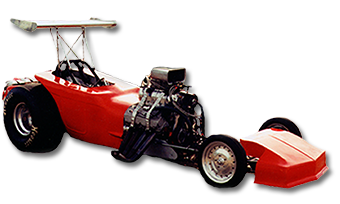TIRE BALANCE NOT SHAKE
Years ago at a drag strip in Michigan, I was testing my funny car. I thought it had a tire shake problem. Some passerby’s in the pits said “If you can’t drive through tire shake, you don’t belong behind the wheel!” The next run, I launched and the vibration was so bad, I could barely see. I followed my advise givers and stayed in it to try to drive through it. At 189 MPH and almost blind, I crossed the center line. My car hit the high end cone, taking out half of the body panels. I spent the winter gluing the car body back together. Later, I learned that I had a tire balance problem. It was not tire shake. The passerby’s advice was inadequate for a new driver/car owner such as me at that time.
CLUTCH TOO TIGHT; TOO MUCH SHAKE
Many years later at a track on the West Coast, my funnycar occasionally had tire shake when I shifted into second gear, and I would let up to regain control. A friend said that was good for testing, however I should drive through it in a competition. That evening during competition, I had tire shake going into second gear and stayed in it following my friend’s advice. The car drifted into the guard rail during the blinding shake. I spend the next month repairing minor body damage, a broken header, and scuffed rim.
Later, I found out that my 3 disc, 11″ clutch was too big for my 1,200 HP engine. When the track would go away, my car would shake going into 2nd gear because the clutch was locked up. It was also heavy at 75 pounds. The combination with a 1,200 HP blown engine would tire shake in the shift.
TIRE SHAKE SOLUTIONS
I took out one of the disks & floaters, reducing the weight to 52 pounds.
I increased the static load clutch adjustment and reduced the centrifugal clutch counter weight. That combination was to reduced the high RPM lock up to get the clutch to slip during the shift.
I also payed attention to drive tire age and hardness. I kept soft tires on the car for maximum traction. I measured softness with a tire durometer only running tires at or below 35 on the durometer gauge.
I also measured rear tire roll out on both sides of the car. Our crew adjusted tire pressure bias every round to get the car to power down the middle of the track. If the car drifted from the center, the crew was instructed to keep tire pressure higher on that side of the car. As little as 1/4 psi of tire pressure difference side-to-side could steer the car.
With this combination, I rarely saw tire shake again in the shift. In addition, the car rarely drifted from the center of the lane. When I did experience a bad track from a cold temperature or poorly prepared surface, I let up to regain control. It was not worth it to try to drive through tire shake.
I often see advice givers in the various media suggesting motorsports advice without enough questions to understand what is going on. All I can say is be careful with passerby’s and quick fixes. When in doubt, turn it down. Make partial test runs. Read engine characteristics. Rather than trying to ‘leg’ through problems such as misfiring, tire shaking, poor handling, etc., stop and take a breather. Look carefully at the fundamentals. We wrote 6 books about fuel injection and racing fuels. All total close to 1,000 pages just about those subjects. There is that much to it, and more that we are writing about in our tech articles on this site and https://airdensityonline.com.
